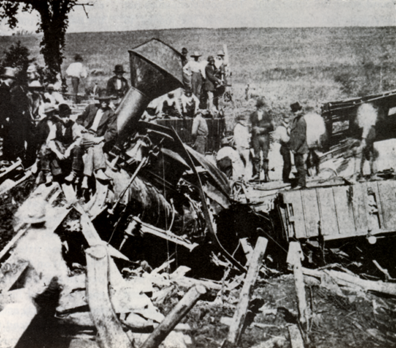First Settlers Scramble For Land
Eager settlers carrying lanterns or torches marked off thousands of acres before dawn. Some who did not have axes to make posts to layout the boundaries of their claims marked their land by carving their initials on trees with pocket knives. One of the men who carved his initials was Jacob Frederick, who came from Ohio. He claimed most of the land of section 4 township 78, roughly from half way to Rising Sun To Pleasant Hill Blvd. and from Highway 163 to Parkridge Drive. Being the first person to claim this land, Frederick bought it directly from the United States government.
Others were also attracted to the Four Mile Creek area, which was described as having beautiful groves alternating with rich prairies. Making claims soon after Frederick were James H. Finch, Samuel Harvey, Bluford Barlow, and Thomas H. Napier. All located their farmsteads along or near the creek. Frederick added more land to his original holdings at the same time. His land was by far the largest, eventually containing over 800 acres.
After Iowa became a state in 1846, the U.S. government turned over all unclaimed land to the state. Finch,
On April 13, 1847 the area was officially designated Four Mile Township. (However, the boundaries of the new township were not the same as those of the present Four Mile Township The place for holding elections was fixed at the houses of Jacob Frederick, and he, Montgomery McCall, and Napier were appointed judges.
In the 1850’s, farming and lumbering were the main economic activities in the Four Mile Creek area. Frederick started a sawmill, Napier operated a combination lumber and flour mill, and later Harvey operated a sawmill. The mills provided lumber for the settlers’ houses. Also, the lumber brought income to Four Mile. Many of the logs were sold to the people of Fort Des Moines.
Frederick had such a large farming operation (he introduced sheep into the area) that he went into partnership with two of his sons, John S. and Benjamin Franklin. However, John did not work very hard at farming and eventually left for Oregon. As Jacob was getting up in years, B. F. took over the duties of running the farm.
